The Pearls and Jade Pothos is a low-maintenance houseplant that requires a little water, some bright light, and an occasional trimming to keep it in tip-top shape. That makes it ideal for beginners.
This guide will cover the details on how to care for the Pearls and Jade Pothos plant.
Pearls and Jade Pothos Overview
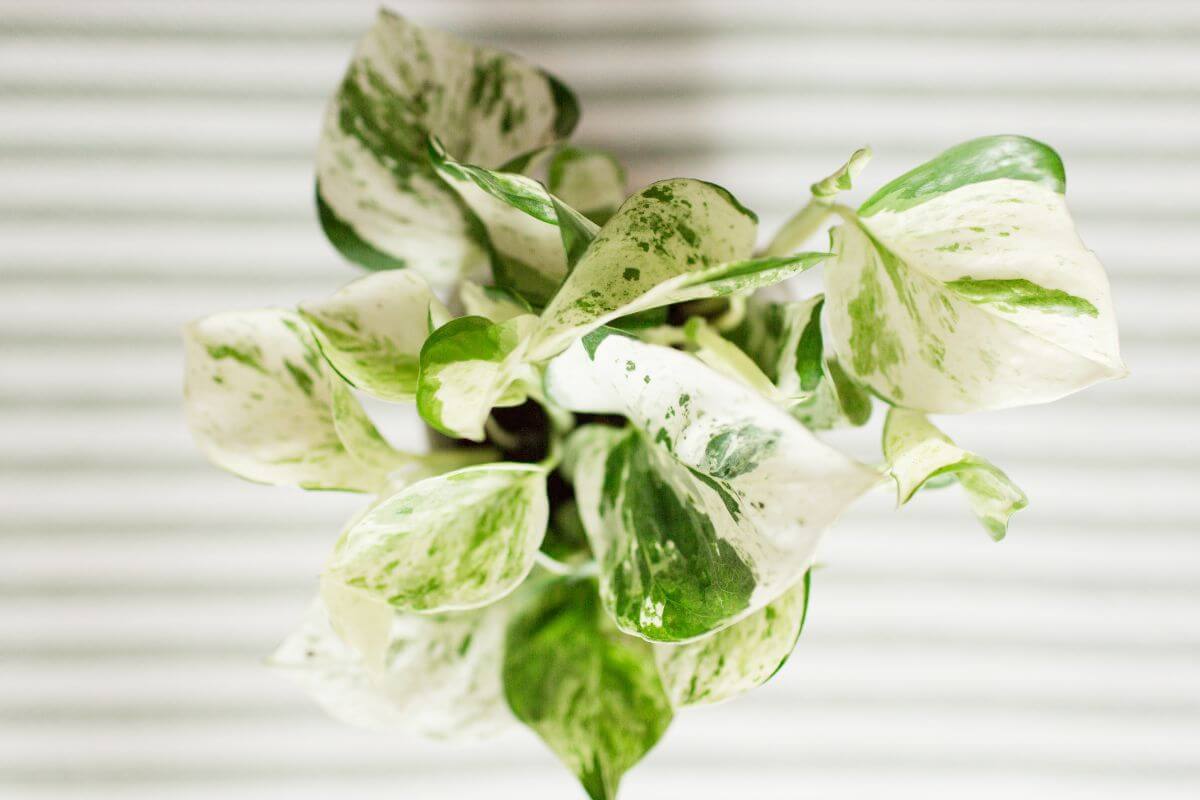
The Pearls and Jade Pothos is an exceptionally hardy houseplant that will bring an explosion of creamy white and deep green to your décor.
Whether you decide to grow it as a climber on a trellis, as a cascade of color from a hanging pot, or as an impressive tabletop bushy plant, it’ll provide beauty in your home or office.
Botanically named the Epipremnum aureum “Pearls and Jade,” as a pothos cultivar, it might easily also be named Devil’s Ivy or Money Plant depending on who you’re talking to.
These are slow-growing evergreens and pretty pest resistant. They won’t be dropping leaves when the season changes.
Their vining nature means they can climb, cascade downward, or be pruned to make a nice stand-up plant for your table. The foliage is usually heart-shaped and somewhat thick with waxy appearance.
When grown in their natural habitat, they can reach 30 feet in length, but indoors it will depend on you and how often you prune them.
Pearls and Jade Pothos Care Guide
Soil for the Pearls and Jade Pothos
The Pearls and Jade Pothos will thrive in standard, well-draining potting soil. If you want to improve soil aeration and drainage, make your own potting mix with a third of it being perlite.
Drainage and aeration are fundamental for a thriving houseplant, so the soil should be loose in texture. That will allow for airflow and oxygen to be absorbed by the plant.
Make sure you also have pots with unobstructed drainage holes.
Temperature for the Pearls and Jade Pothos
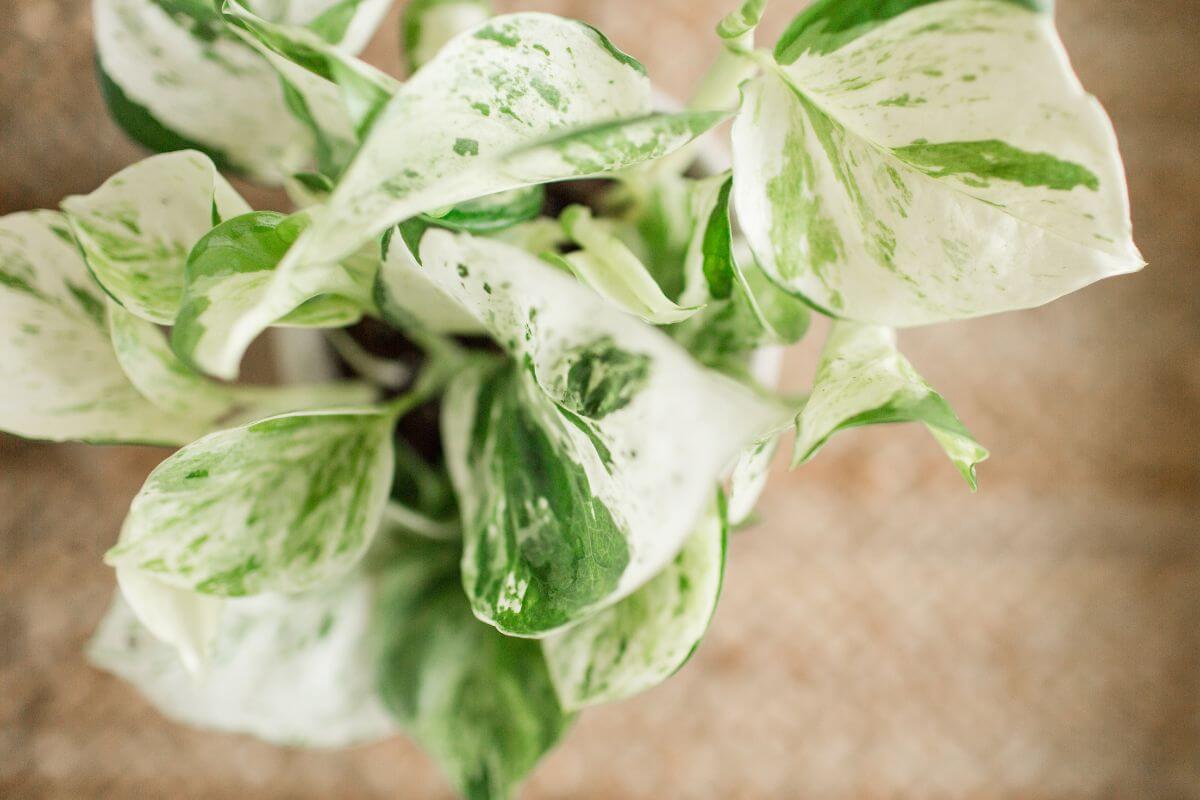
The Pearls and Jade Pothos plant needs a temperature that sits above 50° Fahrenheit, with the average measuring somewhere between 65° and 75°F.
It is not a plant that tolerates cold weather and frost well, so it’s best to try and keep the temperature above 60°F. They grow best in USDA hardiness zones 9 through 12.
Light for the Pearls and Jade Pothos
This pothos variety likes lots of very bright indirect light. It can be tough to know whether your indoor plant is enjoying its light conditions, but the Pearl and Jade Pothos will let you know with its leaves.
When its variegated leaves start turning into solid green leaves, you’ll know immediately that your plant is not getting sufficient light. Should this happen, simply move the plant to a brighter spot, and you’ll see variegation increase.
On the other hand, if the foliage turns paler, the plant is receiving too much light, so move it accordingly.
Keep it away from direct light sources such as windows, because this will cause discoloration and scorching of the leaves.
If the room that the plant is in doesn’t get as much natural light, you can also turn on fluorescent lighting. This plant can will also do well with that indoor lighting.
Water for the Pearls and Jade Pothos
Like other pothos plants, it’s recommended to allow the soil dry out a bit between watering.
The Pearls and Jade Pothos should not be allowed to sit in waterlogged or soggy soil as it will expose your plant to root rot, one of the principal diseases of pothos plants. Make sure the excess water is able to drain.
To verify if your plant needs water, stick your finger into the soil a couple of inches. If the soil feels dry, it’s time to water. You can also use a digital moisture meter.
If the leaves droop, the plant is underwatered and you’ll want to water immediately.
The easiest way to water your Pearls and Jade plant is to soak it in the sink letting the water run for about ten seconds. Afterward, leave the plant in the sink to drain out completely.
Humidity for the Pearls and Jade Pothos
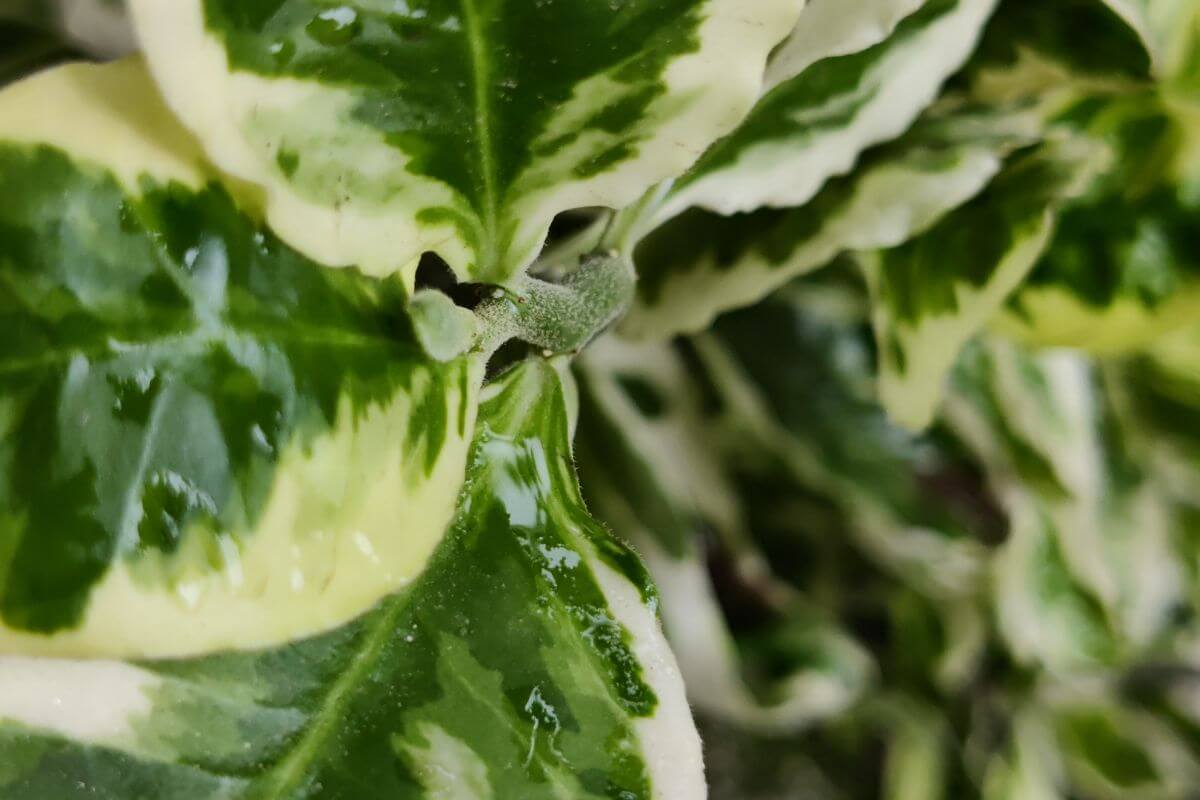
The Pearls and Jade Pothos loves high humidity. A humidity level between 50% and 70% is best for the plant.
It can tolerate lower humidity levels, but it’s best to try and keep humidity higher. There are a number of different ways to do that.
If you want to increase humidity levels, try using a pebble tray, humidifier, or placing your pothos in a group of houseplants to create a microclimate.
There is always the bathroom or kitchen too. Those are naturally humid areas of the home that can be good locations for tropical plants.
Fertilizer for the Pearls and Jade Pothos
The Pearls and Jade Pothos is not a big eater, so fertilizing will not present much of a problem. Fertilizer can help slow growth, but it’s not really needed.
You can use a basic houseplant fertilizer diluted to half-strength bi-monthly. Feeding during winter dormancy can be avoided.
Pruning the Pearl and Jade Pothos
Should you decide that you would prefer a bushier fuller-looking plant , trim stems till they are relatively short in length. You should also remove any dead or dying foliage as well as prune stems that look leggy and seem somewhat bare.
Repotting the Pearl and Jade Pothos
When the Pearls and Jade Pothos becomes rootbound, it’s time to repot it. If foliage begins to droop and roots begin to peak out of the pot’s drainage holes or soil surface, you need to repot.
Spring is the best time for repotting. It’s best to avoid repotting during the plant’s dormant period. Here is how to repot the plant:
- Select a pot that is one size larger or about two inches larger than the root ball.
- Place some fresh soil in the new pot and place your plant inside.
Make it sure it’s also well-draining soil.
Repotting will probably not be necessary more than once annually.
Propagating the Pearl and Jade Pothos
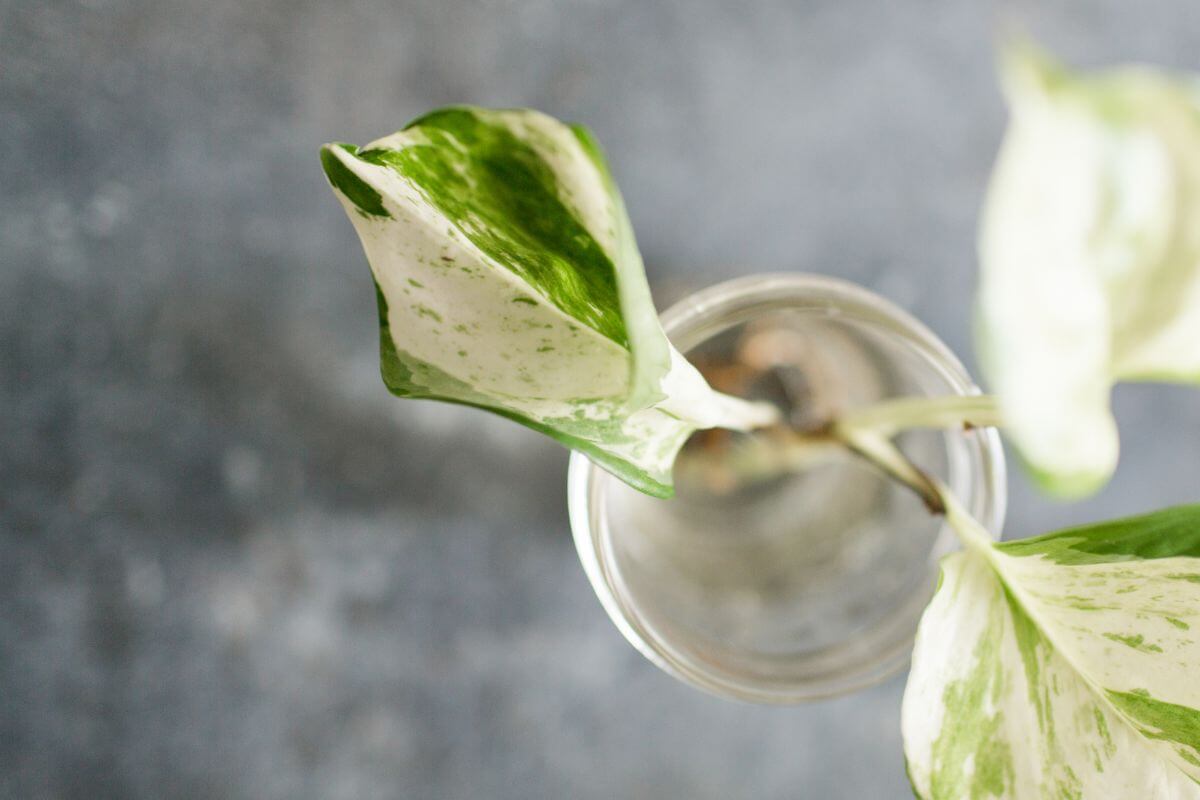
Like other pothos cultivars, the easiest way to propagate the Pearls and Jade Pothos is with stem cuttings.
Here are the steps to propagate using a cutting in water:
- Take a cutting of about four to six inches in length from the mother plant. Make sure the cutting has a few leaf nodes.
- Remove any lower leaves from the cutting and place them in a jar of water.
- Expect to wait about a month before new, healthy roots appear on your stem cutting.
- Once the roots have developed to at least an inch in length, you can transplant the cutting to potting soil.
- Initially, keep the potting soil a bit moister than usual to facilitate the transition for your new plant.
Pearl and Jade Pothos Toxicity and Pets
The Pearl and Jade Pothos is a beautiful plant, but it contains calcium oxalates, so it’s toxic to cats and dogs.
Be sure to keep the plant away from pets. Ingestion symptoms can range from irritation to swelling to vomiting.
If the plant is ingested and any symptoms show up, immediately call the veterinarian.
Pearl and Jade Pothos Problems, Pests, and Diseases
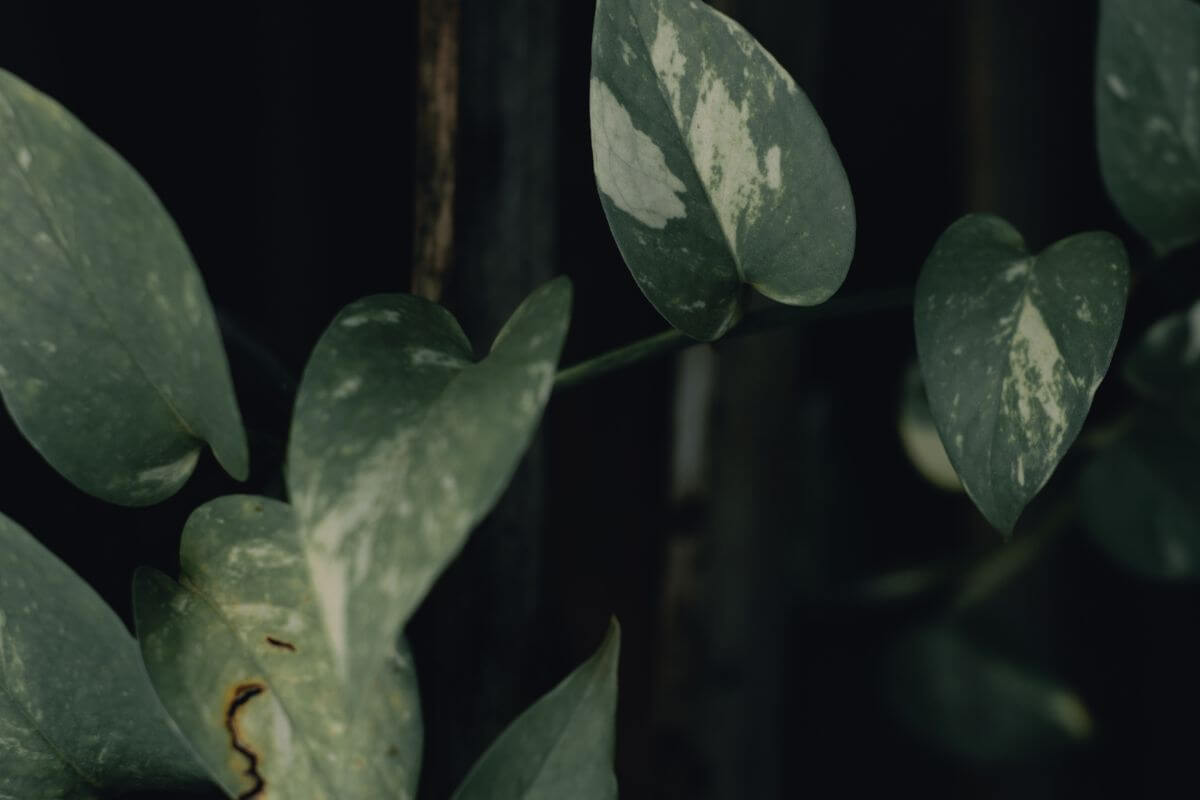
These are forgiving plants, but they can still have some problems if their environment is too big of a departure from their native tropical conditions. Look for signs from the plant to let you know it needs something from you.
Yellow leaves are usually a result from overwatering and a sign of potential root rot. Check the plant roots to see there’s anything wrong.
Yellowing leaves and leaf tips can also indicate that there’s a nutrient deficiency. It could be iron, zinc, or manganese. Give it a monthly feeding of fertilizer to give it some nutrients.
Brown leaf tips or leaves imply that the air is too dry and the humidity level needs to be raised. The easiest solution is to get a humidifier for plants.
Do be aware that this pothos is at risk for fungal infections, and these can be caused by:
- Exaggerated or too frequent misting
- Insufficient ventilation and airflow
- Plants placed too closely next to one another, so there’s no airflow
- Wet foliage.
The Pearls and Jade Pothos are susceptible to common houseplant pests including aphids, mealybugs, scales, spider mites, and thrips among others. Most of these are insects that suck the sap out of the foliage.
If you see pests on your plant, you can remove scale and mealybugs by hand, and then treat the plant with insecticidal soap or neem oil.
For other pests, give your plant a good spray or shower to wash pests away. Then follow up with the same treatment. Should these steps not resolve the infestation, you will probably need to dispose of the plant.
When treating a disease or pest infestation, keep the plant away from your other houseplants, so nothing is transferred to other plants.
Pearl and Jade Pothos Care Final Thoughts
All in all, the Pearl and Jade Pothos is a great addition to any home. They’re easy to care for and look lovely in any room.
They’re very tolerant of most environments, which makes them perfect for beginners. You don’t need much space for them, and they’ll grow just fine indoors.
Learn about other varieties of pothos with these guides:
- Jessenia Pothos Care and Grow Guide
- NJoy Pothos Care and Grow Guide
- Pothos N Joy vs Pearls and Jade
- Swallowtail Plant Care
Pearl and Jade Pothos FAQs
Does the Pearls and Jade Pothos grow fast?
The Pearls and Jade Pothos is slower growing than other pothos varieties, but you can feed it diluted houseplant fertilizer once every 1-2 months. That will help increase its growth rate. It can grow 6 inches to 6 feet per vine in one year.
How can I improve the variegation on my Pearls and Jade Pothos?
Improve variegation on your Pearls and Jade Pothos leaves by giving the plant lots of bright indirect light. Light allows the plant to perform photosynthesis to get more leaf variegation.
How Often Should I Water a Pearls and Jade Pothos?
Water the Pearls and Jade Pothos once every 1-2 weeks. Watering frequency can vary depending on where you live and the climate. If the air is hot and dry, the soil will dry faster, so you’ll need to water more often.
How Much Light Does a Pearls and Jade Plant Need?
The Pearls and Jade Plant likes lots of light, but it should be indirect bright light. Direct sunlight can burn the leaves.


